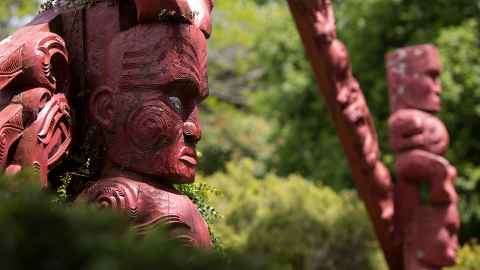What is a mihi whakatau?
A mihi whakatau is a form of welcome similar to a pōwhiri, but less formal.

What to expect
The main difference between a pōwhiri and a mihi whakatau is that while a pōwhiri may be conducted on a Marae, a mihi whakatau can be done in other locations and may not feature a karanga (the call of the woman).
In this case the mihi whakatau is still an official welcome for all new students to the University of Auckland. It removes the tapu (restrictions) of the manuhiri (visitors) to make them one with the tangata whenua (hosts).
When you arrive, you will spot the coordinating crew. The ambassadors are there to help guide you.
Mihi whakatau procedure
- Karanga (if being provided)
- All guests will be guided to their seats
- A karakia/blessing is then recited
- Followed by a mihi/speech by the hosts
- When host speeches are completed manuhiri/visitors will be invited to speak
- All speeches are followed by a waiata tautoko/song of support
- Tangata whenua will then complete the process and invite manuhiri to move across to harirū/shake hands and hongi/press noses with tangata whenua/hosts. Depending on alert levels this may be a friendly elbow bump
- The Kaikōrero will provide guidance.This is followed by partaking in kai/food
Speaking at a whakatau
If you are comfortable speaking te reo Māori or any language other than English, you might want to consider being a kaikōrero (speaker on behalf of the students). If you do wish to speak, please let one of the crew know well in advance.
Appropriate behaviour
- Please ensure all mobile phones are turned off, nobody is eating and everyone is respectfully listening to all that is occurring during the welcome.
- We ask that manuhiri respect a tidy dress code. Absolutely no sports shorts, singlets or unpresentable dress attire.